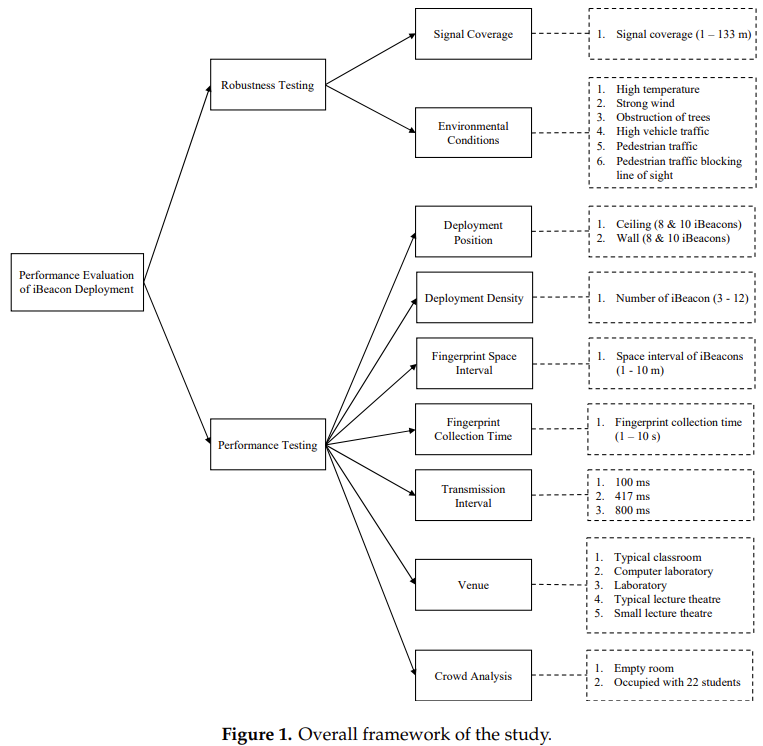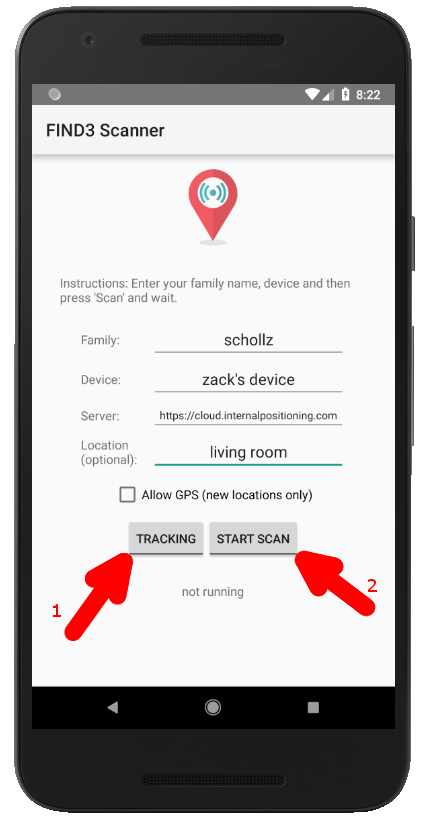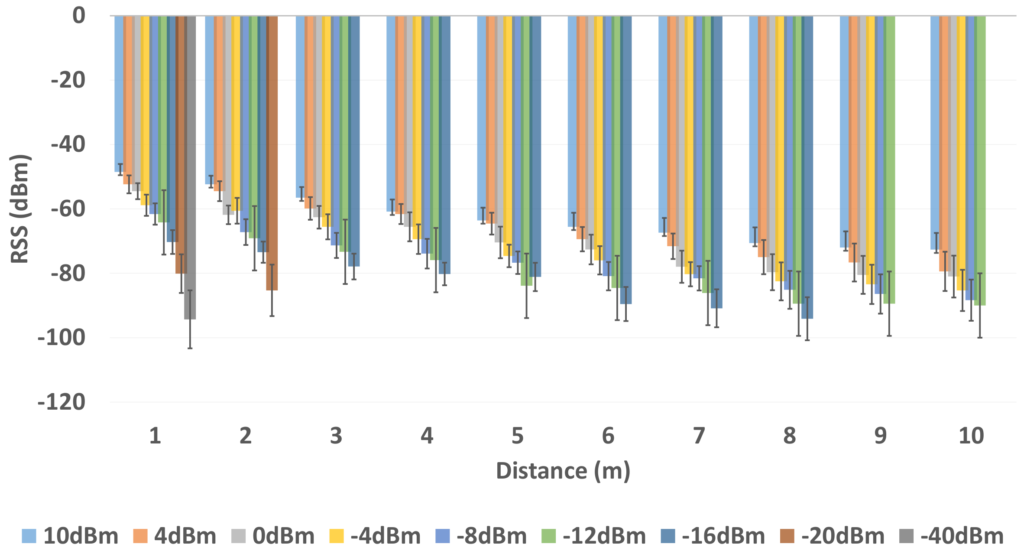Researchers from the The Hong Kong Polytechnic University have a new paper on Performance Evaluation of iBeacon Deployment for Location-Based Services in Physical Learning Spaces (pdf) that tests environmental and deployment factors, indoors and outdoors, related to using ibeacons for locating. It provides recommendations for iBeacon deployment in terms of location, density, transmission interval, fingerprint space interval and collection time.

The paper provides a great introduction to positioning using beacon received signal strength (RSSI). It describes trilateration and fingerprinting methods for determining location.
Key insights are:
- High temperature, strong wind and blocking by pedestrians degraded the signal strength.
- Pedestrians traffic blocking the line of sight caused the most signal attenuation and variation.
- High air temperature caused significant increase of packet loss that affected the RSSI.
- Strong wind reduced the signal strength but didn’t affect the stability of signals.
- Trees and nearby vehicle traffic didn’t have any negative effects on signals.
- Lower error rates were observed when beacons were deployed on the ceiling as opposed to on the wall.
- Positioning accuracy improved with ceiling placement due to the reduction of obstructions.
- If ceilings are too high or ceiling deployment is impracticable wall mounted iBeacons should be placed as high as possible.
- For fingerprinting, sample at 2m grid intervals for 6s to 10s at each point. Avoid having too many beacons as this won’t improve the positioning accuracy. A transmission interval of 100ms is detrimental to the positioning accuracy. 417ms is better.
- For fingerprinting, positioning accuracy varies greatly according to the what is in the room.
The paper mentions that beacon UUID, major and minor are used to uniquely identify beacons. While this is true in the context of detecting using apps, most locating systems use gateways. Gateways use the Bluetooth MAC address to uniquely identify beacons and the advertising type, iBeacon, Eddystone or other, is irrelevant. Using gateways as receivers is also a solution to the problem of variability in receiving capability across smartphones.
The study only considered one beacon type and two receiving smartphones. At Beaconzone, we recommend experimenting with the actual hardware in the actual environment as, being wireless radio, optimum settings and can vary considerably.
Read about Using Beacons, iBeacons for Real-time Locating Systems (RTLS)

